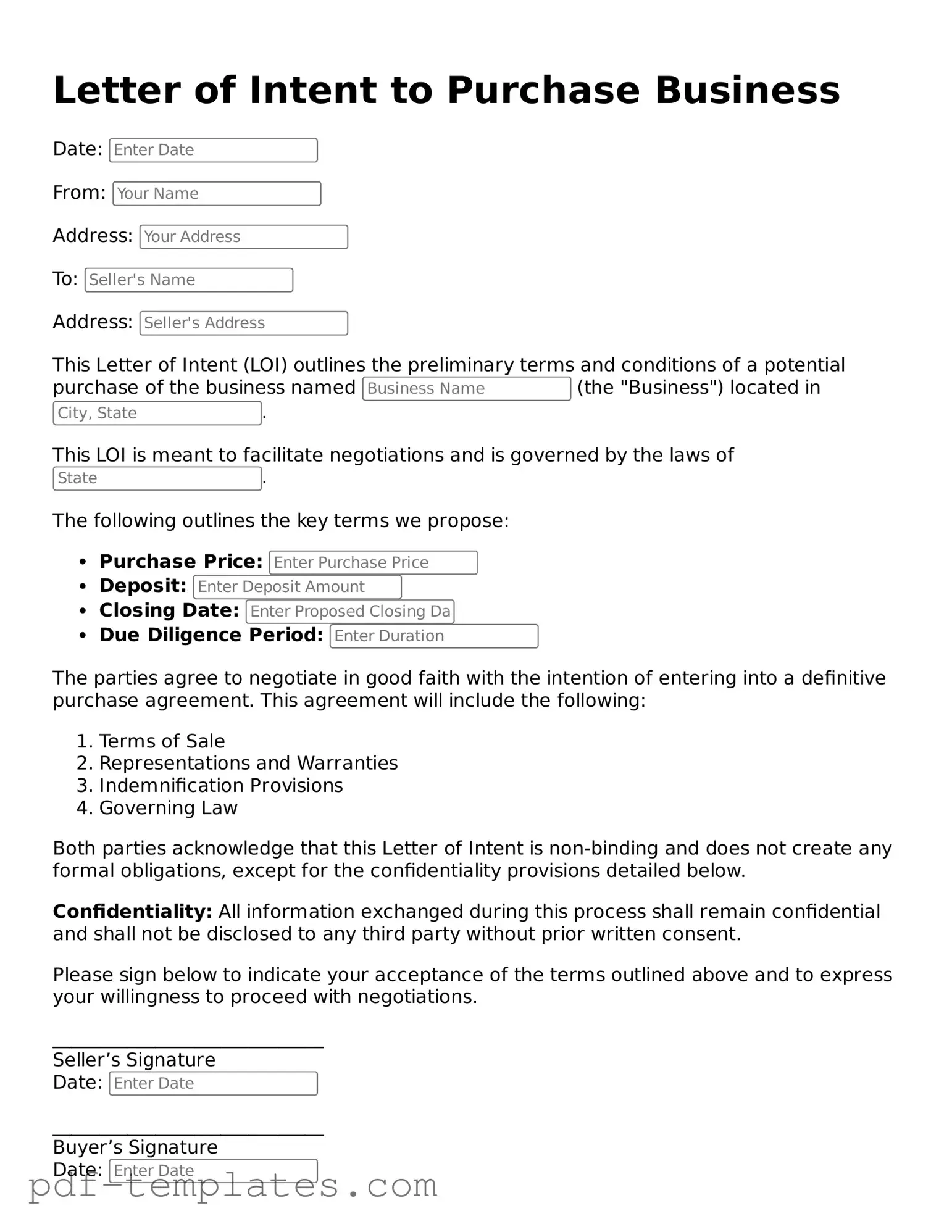The Non-Disclosure Agreement (NDA) is similar to the Letter of Intent to Purchase Business in that it establishes the confidentiality of shared information. When two parties engage in discussions about a potential business transaction, they often exchange sensitive data. An NDA ensures that this information remains private and cannot be disclosed to outside parties. This document protects both the buyer and the seller by setting clear boundaries around the use of proprietary information during negotiations.
The Memorandum of Understanding (MOU) serves a purpose akin to that of the Letter of Intent to Purchase Business. An MOU outlines the preliminary understanding between parties before finalizing a deal. It typically includes the intentions of both parties and the general terms of the agreement. While it is less formal than a contract, it indicates a commitment to move forward and can help clarify the expectations of each party involved in the transaction.
A Purchase Agreement is another document closely related to the Letter of Intent to Purchase Business. This agreement is more formal and legally binding, detailing the terms and conditions under which the business will be sold. It includes specifics such as the purchase price, payment terms, and any contingencies that must be met. The Letter of Intent often serves as a precursor to this agreement, setting the stage for the more detailed negotiations that follow.
In the realm of investment transactions, understanding the nuances of various agreements is essential for successful negotiations. For instance, a well-crafted Investment Letter of Intent not only streamlines the preliminary discussions but also establishes a foundation of trust between parties. Resources like OnlineLawDocs.com provide valuable insights into drafting these important documents, ensuring that investors and sellers are well-prepared for the negotiations ahead and can navigate the complexities of asset acquisition with confidence.
The Term Sheet outlines the basic terms of a proposed agreement between parties. It is similar to the Letter of Intent to Purchase Business in that it summarizes key points of the deal, such as pricing, timelines, and responsibilities. While a term sheet is not legally binding, it provides a framework that guides the drafting of more formal agreements. This document helps both parties align their expectations before moving forward with negotiations.
An Asset Purchase Agreement is specifically related to the acquisition of a business's assets rather than its stock or ownership. Like the Letter of Intent, it details the specifics of the transaction, including which assets are included in the sale. This document is crucial for clarifying what is being sold and helps prevent misunderstandings during the purchase process. The Letter of Intent often precedes this agreement, outlining the buyer's interest in the assets.
The Confidentiality Agreement, similar to the NDA, focuses on protecting sensitive information during negotiations. This document is essential when discussing the purchase of a business, as it assures both parties that proprietary information will not be disclosed. It fosters trust and encourages open communication, which is vital for successful negotiations. The Letter of Intent may reference this agreement to emphasize the importance of confidentiality during the transaction process.
The Due Diligence Checklist is a tool used during the evaluation phase of a business acquisition. It is similar to the Letter of Intent to Purchase Business in that it helps buyers assess the viability of the purchase. This checklist outlines the information and documentation the buyer needs to review before finalizing the deal. While the Letter of Intent expresses the buyer's intent, the due diligence checklist ensures that all necessary evaluations are completed to make an informed decision.
The Closing Statement is the final document in a business purchase transaction. It is similar to the Letter of Intent to Purchase Business in that it summarizes the terms agreed upon by both parties. The closing statement includes details about the financial aspects of the sale, such as the final purchase price and any adjustments. While the Letter of Intent initiates the process, the closing statement represents the culmination of negotiations and the official transfer of ownership.
